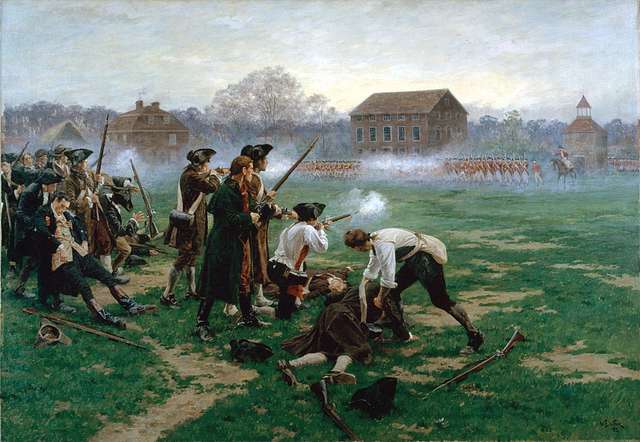A Quick Turnaround Assessment of the White House Intelligence Report Issued on April 11, 2017
Dear Larry:
I am responding to your distribution of what I understand is a White House statement claiming intelligence findings about the nerve agent attack on April 4, 2017 in Khan Shaykhun, Syria. My understanding from your note is that this White House intelligence summary was released to you sometime on April 11, 2017.
I have reviewed the document carefully, and I believe it can be shown, without doubt, that the document does not provide any evidence whatsoever that the US government has concrete knowledge that the government of Syria was the source of the chemical attack in Khan Shaykhun, Syria at roughly 6 to 7 a.m. on April 4, 2017.
In fact, a main piece of evidence that is cited in the document points to an attack that was executed by individuals on the ground, not from an aircraft, on the morning of April 4.
This conclusion is based on an assumption made by the White House when it cited the source of the sarin release and the photographs of that source. My own assessment, is that the source was very likely tampered with or staged, so no serious conclusion could be made from the photographs cited by the White House.
However, if one assumes, as does the White House, that the source of the sarin was from this location and that the location was not tampered with, the most plausible conclusion is that the sarin was dispensed by an improvised dispersal device made from a 122 mm section of rocket tube filled with sarin and capped on both sides.
The only undisputable facts stated in the White House report is the claim that a chemical attack using nerve agent occurred in Khan Shaykhun, Syria on that morning. Although the White House statement repeats this point in many places within its report, the report contains absolutely no evidence that this attack was the result of a munition being dropped from an aircraft. In fact, the report contains absolutely no evidence that would indicate who was the perpetrator of this atrocity.
The report instead repeats observations of physical effects suffered by victims that with very little doubt indicate nerve agent poisoning.
The only source the document cites as evidence that the attack was by the Syrian government is the crater it claims to have identified on a road in the North of Khan Shaykhun.
I have located this crater using Google Earth and there is absolutely no evidence that the crater was created by a munition designed to disperse sarin after it is dropped from an aircraft.
The Google Earth map shown in Figure 1 at the end of this text section shows the location of that crater on the road in the north of Khan Shaykhun, as described in the White House statement.
The data cited by the White House is more consistent with the possibility that the munition was placed on the ground rather than dropped from a plane. This conclusion assumes that the crater was not tampered with prior to the photographs. However, by referring to the munition in this crater, the White House is indicating that this is the erroneous source of the data it used to conclude that the munition came from a Syrian aircraft.
Analysis of the debris as shown in the photographs cited by the White House clearly indicates that the munition was almost certainly placed on the ground with an external detonating explosive on top of it that crushed the container so as to disperse the alleged load of sarin.
Since time appears to be of the essence here, I have put together the summary of the evidence I have that the White House report contains false and misleading conclusions in a series of figures that follow this discussion. Each of the figures has a description below it, but I will summarize these figures next and wait for further inquiries about the basis of the conclusions I am putting forward herein.
Figure 1 shows a Google Earth image of the northeast corner of Khan Shaykhun where the crater identified as the source of the sarin attack and referred to in the White House intelligence report is located.
Also shown in the Google Earth image is the direction of the wind from the crater. At 3 AM the wind was going directly to the south at a speed of roughly 1.5 to 2.5 m/s. By 6 AM the wind was moving to the southeast at 1 to 2 m/s. The temperature was also low, 50 to 55°F near the ground. These conditions are absolutely ideal for a nerve agent attack.
When the temperature near the ground is low, and there is no sun and very slow winds, the dense cool air stays close to the ground and there is almost no upward motion of the air. This condition causes any particles, droplets, or clouds of dispersed gas to stay close to the ground as the surrounding air moves over the ground. We perceive this motion as a gentle breeze on a calm morning before sunrise.
One can think of a cloud of sarin as much like a cloud of ink generated by an escaping octopus. The ink cloud sits in the water and as the water slowly moves, so does the cloud. As the cloud is moved along by the water, it will slowly spread in all directions as it moves. If the layer of water where the ink is embedded moves so as to stay close to the ocean floor, the cloud will cover objects as it moves with the water.
This is the situation that occurs on a cool night before sunrise when the winds move only gently.
Figures 5 and 6 show tables that summarize the weather at 3 hour intervals in Khan Shaykun on the day of the attack, April 4, the day before the attack, April 3, and the day after the attack, April 5. The striking feature of the weather is that there were relatively high winds in the morning hours on both April 3 and April 5. If the gas attack were executed either the day before or the day after in the early morning, the attack would have been highly ineffective. The much higher winds would have dispersed the cloud of nerve agent and the mixing of winds from higher altitudes would have caused the nerve agent to be carried aloft from the ground. It is therefore absolutely clear that the time and day of the attack was carefully chosen and was no accident.
Figure 2 shows a high quality photograph of the crater identified in the White House report as the source of the sarin attack. Assuming that there was no tampering of evidence at the crater, one can see what the White House is claiming as a dispenser of the nerve agent.
The dispenser looks like a 122 mm pipe like that used in the manufacture of artillery rockets.
As shown in the close-up of the pipe in the crater in Figure 3, the pipe looks like it was originally sealed at the front end and the back end. Also of note is that the pipe is flattened into the crater, and also has a fractured seam that was created by the brittle failure of the metal skin when the pipe was suddenly crushed inward from above.
Figure 4 shows the possible configuration of an improvised sarin dispersal device that could have been used to create the crater and the crushed carcass of what was originally a cylindrical pipe. A good guess of how this dispersal mechanism worked (again, assuming that the crater and carcass were not staged, as assumed in the White House report) was that a slab of high explosive was placed over one end of the sarin-filled pipe and detonated.
The explosive acted on the pipe as a blunt crushing mallet. It drove the pipe into the ground while at the same time creating the crater. Since the pipe was filled with sarin, which is an incompressible fluid, as the pipe was flattened the sarin acted on the walls and ends of the pipe causing a crack along the length of the pipe and also the failure of the cap on the back end. This mechanism of dispersal is essentially the same as hitting a toothpaste tube with a large mallet, which then results in the tube failing and the toothpaste being blown in many directions depending on the exact way the toothpaste skin ruptures.
If this is in fact the mechanism used to disperse the sarin, this indicates that the sarin tube was placed on the ground by individuals on the ground and not dropped from an airplane.
Figure 8 shows the improvised sarin dispenser along with a typical 122 mm artillery rocket and the modified artillery rocket used in the sarin attack of August 21, 2013 in Damascus.
At that time (August 30, 2013) the Obama White House also issued an intelligence report containing obvious inaccuracies. For example, that report stated without equivocation that the sarin carrying artillery rocket used in Damascus had been fired from Syrian government controlled areas. As it turned out, the particular munition used in that attack could not go further than roughly 2 km, very far short of any boundary controlled by the Syrian government at that time. The White House report at that time also contained other critical and important errors that might properly be described as amateurish. For example, the report claimed that the locations of the launch and impact of points of the artillery rockets were observed by US satellites. This claim was absolutely false and any competent intelligence analyst would have known that. The rockets could be seen from the Space-Based Infrared Satellite (SBIRS) but the satellite could absolutely not see the impact locations because the impact locations were not accompanied by explosions. These errors were clear indicators that the White House intelligence report had in part been fabricated and had not been vetted by competent intelligence experts.
This same situation appears to be the case with the current White House intelligence report. No competent analyst would assume that the crater cited as the source of the sarin attack was unambiguously an indication that the munition came from an aircraft. No competent analyst would assume that the photograph of the carcass of the sarin canister was in fact a sarin canister. Any competent analyst would have had questions about whether the debris in the crater was staged or real. No competent analyst would miss the fact that the alleged sarin canister was forcefully crushed from above, rather than exploded by a munition within it. All of these highly amateurish mistakes indicate that this White House report, like the earlier Obama White House Report, was not properly vetted by the intelligence community as claimed.
I have worked with the intelligence community in the past, and I have grave concerns about the politicization of intelligence that seems to be occurring with more frequency in recent times – but I know that the intelligence community has highly capable analysts in it. And if those analysts were properly consulted about the claims in the White House document they would have not approved the document going forward.
I am available to expand on these comments substantially. I have only had a few hours to quickly review the alleged White House intelligence report. But a quick perusal shows without a lot of analysis that this report cannot be correct, and it also appears that this report was not properly vetted by the intelligence community.
This is a very serious matter.
President Obama was initially misinformed about supposed intelligence evidence that Syria was the perpetrator of the August 21, 2013 nerve agent attack in Damascus. This is a matter of public record. President Obama stated that his initially false understanding was that the intelligence clearly showed that Syria was the source of the nerve agent attack. This false information was corrected when the then Director of National Intelligence, James Clapper, interrupted the President while he was in an intelligence briefing. According to President Obama, Mr. Clapper told the President that the intelligence that Syria was the perpetrator of the attack was “not a slamdunk.”
The question that needs to be answered by our nation is how was the president initially misled about such a profoundly important intelligence finding? A second equally important question is how did the White House produce an intelligence report that was obviously flawed and amateurish that was then released to the public and never corrected? The same false information in the intelligence report issued by the White House on August 30, 2013 was emphatically provided by Secretary of State John Kerry in testimony to the Senate Foreign Relations Committee!
We again have a situation where the White House has issued an obviously false, misleading and amateurish intelligence report.
The Congress and the public have been given reports in the name of the intelligence community about weapons of mass destruction in Iraq, technical evidence supposedly collected by satellite systems that any competent scientists would know is false, and now from photographs of the crater that any analyst who has any competent at all would not trust as evidence.
It is late in the evening for me, so I will end my discussion here.
I stand ready to provide the country with any analysis and help that is within my power to supply. What I can say for sure herein is that what the country is now being told by the White House cannot be true and the fact that this information has been provided in this format raises the most serious questions about the handling of our national security.
Professor Emeritus of Science, Technology, and National Security Policy
Massachusetts Institute of Technology
Figures and Diagrams























